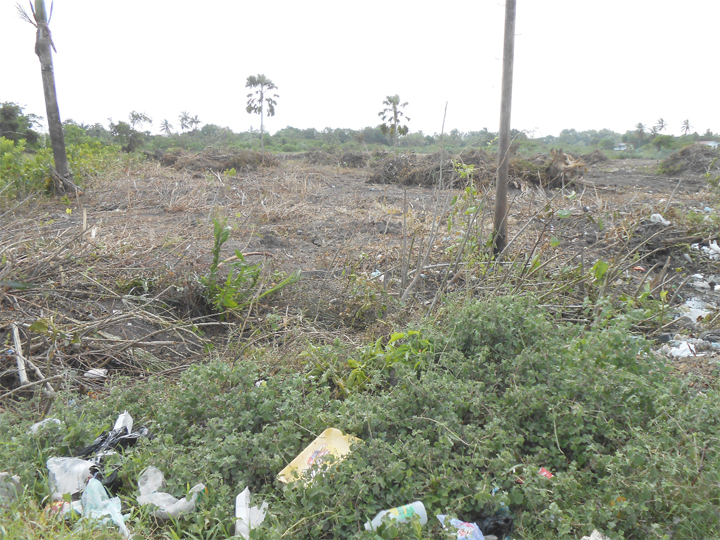A flower garden is to be created at the burial site of the 15 East Indian indentured labourers killed during the 1913 Rose Hall sugar workers strike in order to mark the centenary anniversary of their deaths.
A memorial service will be held at the burial site on Sunday to mark the death anniversary, while assessments are ongoing to determine on the possibility of a permanent memorial.

The East Canje Humanitarian Society is collaborating with government on the project to transform the Nuclear Yard, Rose Hall, Canje site, which has recently become an illegal dump site. The desecration of the site has been condemned by the descendants of those who died during the struggle for better administration of the Rose Hall Sugar Estate.
Steps have since been taken to correct what is perceived as a disrespectful act perpetrated by those ignorant of the community’s history. A signboard detailing the incident and the names of the slain workers has been erected and the burial site cleared of all garbage and overgrown vegetation. A century ago, on March 13, 1913, resistance by Indian workers on the Rose Hall Plantation ended in bloodshed. The British colonial police killed ten indentured and five free workers and injured another 41. The brutality was the climax of six weeks of demonstration by the plantation’s Indian labourers over grievances they had with the estate’s administration.
Meanwhile, recently, a team of officials from the Ministry of Culture, Youth and Sport—the government agency tasked with converting the burial site into a flower garden—visited the area to appraise the land and determine the best way forward.
“We are looking at the possibility of maybe enhancing this square to make it a monument site, sort of,” Permanent Secretary Alfred King, who was part of the team, said. “We are not so sure what the design will be just yet; this is an assessment visit, because we are still trying to discover what should really happen here, in keeping with the history,” he explained.
King made clear the ministry’s position “is just to assess the possibility of trying to create this site as a monument site in recognition of the struggle of those 15 persons who gave up their lives for the betterment of the administration of the sugar estate.” A team of engineers accompanied King to assess the site.
Although government is committed to acknowledging the sacrifices of the workers who perished in the uprising, no action will be taken until the assessment has been completed. “Our assessment will tell us what is possible… because this wasn’t considered in the ministry’s budget for this year, 2013. So we will have to find maybe extra-budgetary means to treat with this as the celebration of the 100 years anniversary looms,” King said.




